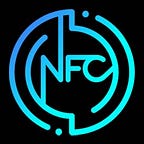NetFlowCoin a web3 provider: Limitless possibilities
Currently, we are still in the early stages of web 3.0, with a wide variety of potential candidates that’ll become web3 providers. Although we are uncertain what web3 will eventually end up looking like, we must first identify key characteristics that we can associate with a web3-based ecosystem.
Key characteristics of a web3 network
1. Decentralized AND centralized: A web3 model could be a combination of both a decentralized and centralized architecture, as everyone will become their own centralized hub that is connected to the network as a whole.
2. DAO (decentralized autonomous organizations): One of the highest forms that web3 could offer is in the form of a DAO, whereby companies can take on a governance model that enables “stakeholders (coin holders)” to vote on decisions within a company, and a smart contract initiates the outcome of a vote (just one example).
3. The rights to your data: Web3 will ultimately offer individuals complete control over their data, and any revenue their data generates.
4. Anonymity: Users will have the option to remain completely anonymous, partially anonymous, or open across a web3 network.
5. Sustainability: The web3 will be sustainable in the sense that, the more nodes in the network the stronger that network will be. When DAPPs (decentralized applications) are hosted across a web3 network, the speed at which they operate will outweigh that of a centralized web2 network.
A web3 provider’s vision
Currently, the web2 architecture is entirely centralized, and the majority of the data/information is held by the gatekeepers such as Facebook, Apple, Amazon, Microsoft, and Google (FAAMG).
It is hardly a possibility for new companies to take on such giants, that is why a web3 infrastructure will shift the paradigm from these gatekeepers to the people.
This creates a void that must be filled to enable individuals to access similar functions to what FAAMG offers. How would this be done?
By creating a globally distributed network that enables complete peer-to-peer communication that is filled with content, DAPPS, services offered by the individuals who built them.
Such a network would consist of high bandwidth sharing, enabling fast computational processing, combined with a storage function, and a gateway for users to access any one of these distributed devices’ content.
How NetFlowCoin is becoming the designated web3 provider
Over the past 10 years, the NetFlowCoin foundation created such a protocol that enables P2P communication, called the SDVN protocol. Many 3rd party developers are using the SDVN protocol as the foundation of their APPS/DAPPS.
Until recently, the NetFlowCoin foundation combined the SDVN protocol with the blockchain to form NetFlowCoin.
NetFlowCoin’s network has the ability to host applications built for the metaverse, by splitting and distributing the applications across it’s 3.6 million NFC-ready nodes.
The characteristics that shape NetFlowCoin has widely become one of the top contenders that’ll be a web3 provider as, users can access other users’ devices across the network to store, stream, and share digital content.
In addition, any digital content accessed across the network will create data traffic, it is this traffic that is then calculated by the network that distributes rewards based on the amount of traffic an individual/user generates.
Although many blockchain projects are ultimately working toward a web3 architecture, many are far from achieving this goal. The future of the internet is here, now it needs time to mature.
